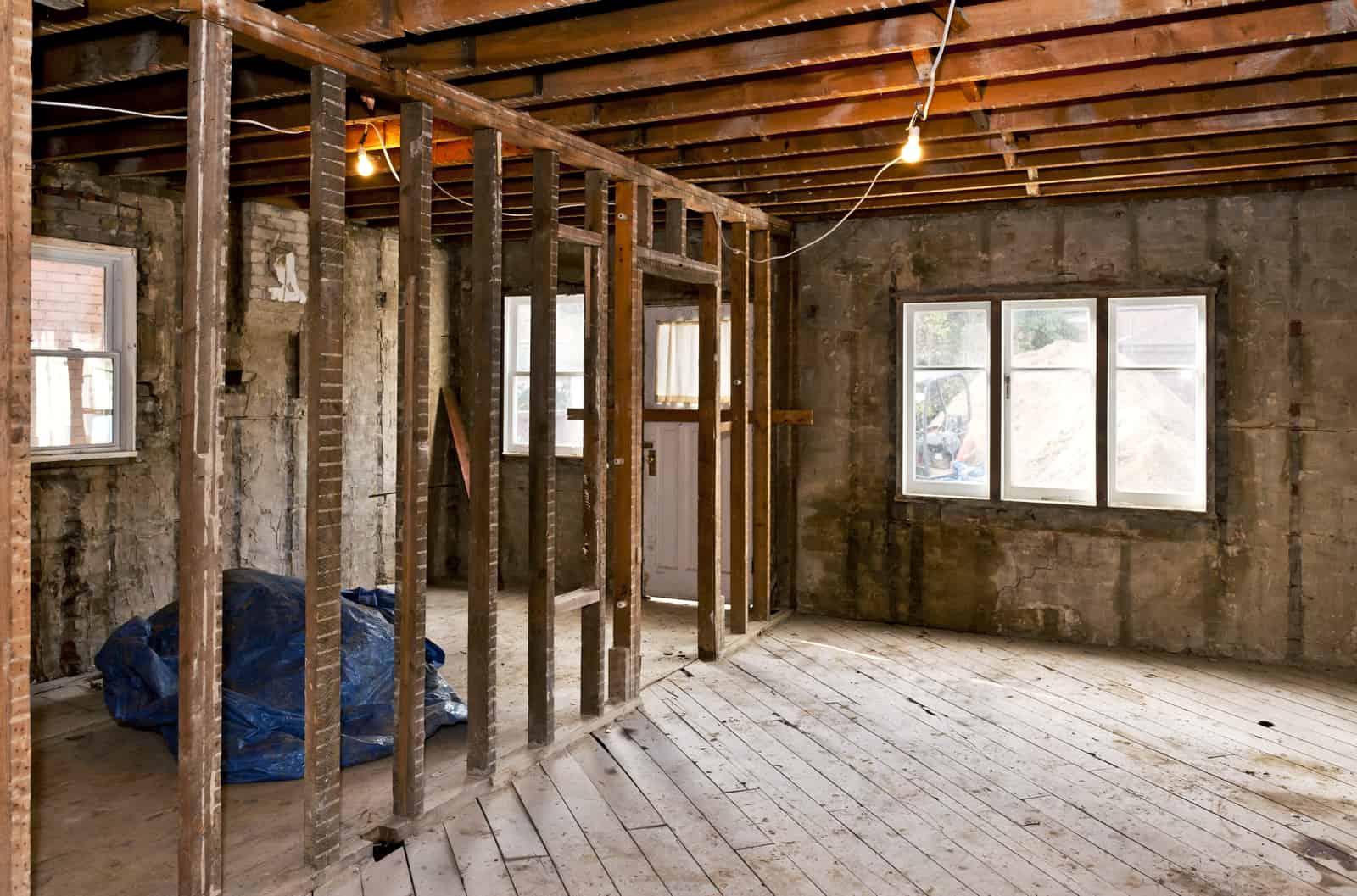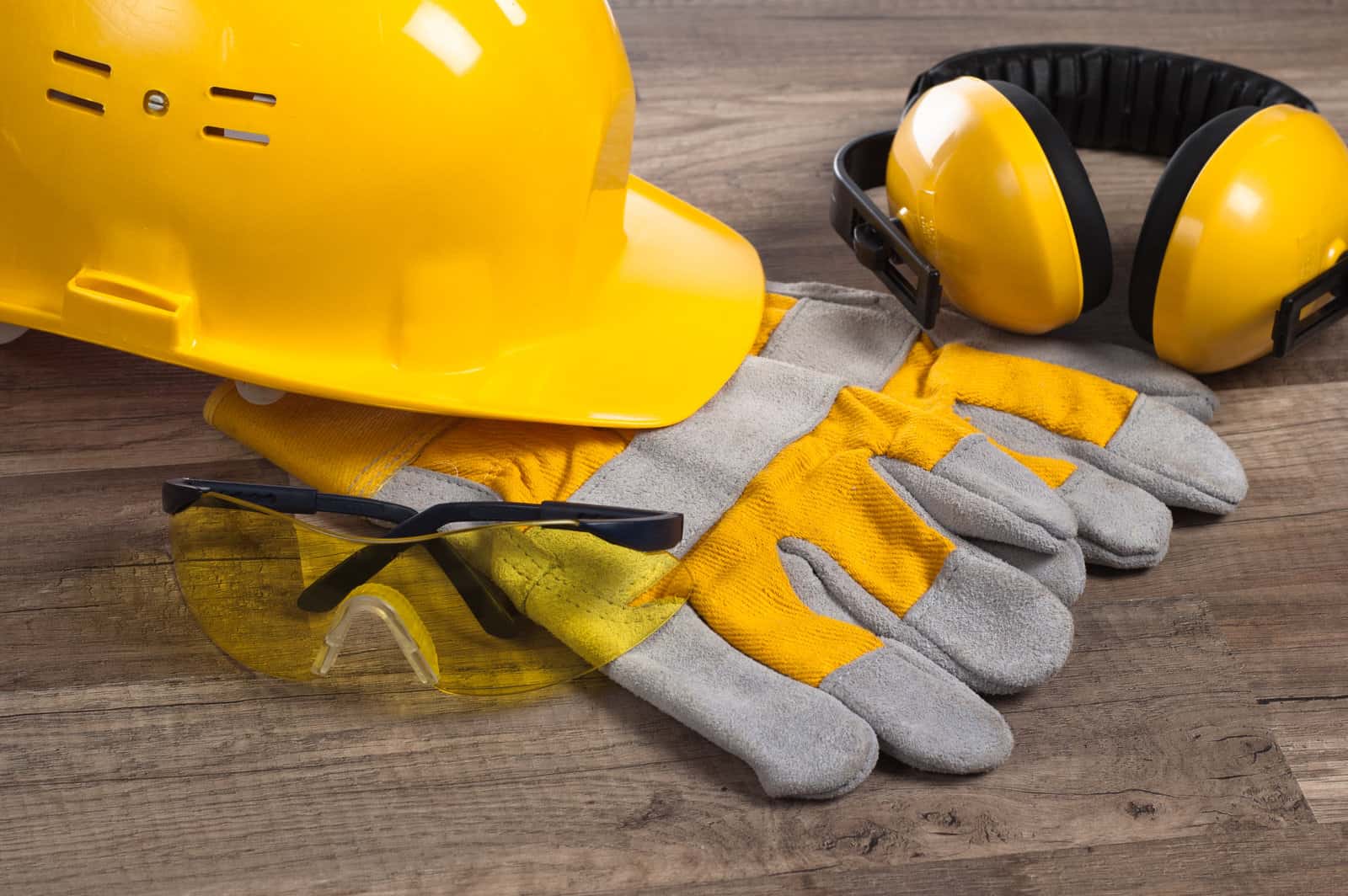
You just bought a home or you just recently bought an investment property. Congratulations! Now comes the hard part: making it feel like home. What’s the solution to that? Home renovation! Remodeling your house into your dream home can mean lots of work, but the results, when done properly, are well worth it.
But wait, before you get too excited and start tearing down the walls and ripping up the floors, here are answers to common questions homeowners may have about gutting a house.
1. What does it mean to “gut a house”?
People often talk about gutting a house when they simply mean they are planning to remodel their homes. However, there is a big difference between remodeling and gutting a property.
“Gutting” a home means you are ripping out the entire interior down to the studs, sometimes doing work to the exterior of the home as well. In contrast, when you remodel, you are just redoing certain aspects of it. When people remodel a property, they may redo many of the functional and aesthetic features of the house but leave the core structural element as it is.
A full gut renovation will involve stripping all the interior finishes of the house including windows, plumbing, heating, wall material such as drywall, cabinets, fixtures and more. This will leave you with just the structural skeleton foundation of the building. However, many gut renovations are not a full gut. There are certain aspects like stairs and windows that are left intact depending on their condition and the owner’s budget.
Understanding the difference in the cost of a full gut and simply remodeling will be important as you move forward with your plans for renovation. You will have to consider the condition of the property, what you ultimately want the property to be when completed, and the budget available to you. Ask yourself if it is necessary to gut the house and whether or not it is feasible to transform the house into what you want with a budget that is financially responsible.
2. What tools do I need to gut a house?

There is nothing worse than getting halfway through the gut renovation and realizing that you do not have the right tools to detach a tricky part of the room. For starters, here is a list of some basic tools that you will definitely need:
- Protective equipment like dust mask, protective glasses, ear plugs, hard hat, gloves and steel toe boots
- Hammer
- Crowbar
- Sledgehammer
- Reciprocating saw
- Stud finder
- Utility knife (box cutter)
- Power drill
- Breaker drill or air chisel
- Tool belt
- Extensions cords
- Portable lights
- Demolition bars
- Brooms
- Ladders
- Various tapes
- Pliers
- Drop cloths and plastic sheeting
- Carpet protector film if you are planning to keep the carpet
- Floor protection paper for hardwoods and other flooring you are keeping
3. What do I need to do to prepare for gutting a house?
Get a Permit (If Necessary)
Check with your local government to see if your planned demolition will require a demolition permit. Smaller projects such as interior-only projects may be exempt or simply lumped into a building permit, but check first before proceeding.
If you are demolishing more than one structure, you will likely need a permit for each structure.
Insurance
Before you start any gut job on your home, always check whether you have proper insurance. There are two types of insurance you may need: insurance on the property and insurance on the workers.
A simple renovation project probably won’t require additional insurance on the property other than your regular homeowners policy. However, if you are fully gutting the home or if the home will be unoccupied for an extended period of time, you may need a builder’s risk policy or a vacant dwelling policy.
If you are doing the demolition yourself, but plan to have some friends or other people helping you, make sure your insurance would cover any injuries that might occur. Always check with your insurance company before you start any demolition.
Of course, if you are using a contractor, they should have their own insurance to cover their work and workers. Verify that they do.
Verify the Structure
Make sure that you know which walls are load bearing and non-load bearing. Knocking down load bearing walls should only be done by professionals so it is important to distinguish which is which to avoid any unnecessary damages. If you are unsure, it is better to consult an architect or engineer.
Check any fire regulations because some walls may serve as a double purpose to protect your escape route in fire emergencies. Some changes may need to be approved to meet your building codes so make a thorough check before you start demolition.
Plan
Before gutting anything, take time to make a home remodeling checklist. This includes determining which rooms of your home you are going to gut and renovate, and what you want and need in those rooms.
Decide what stays and what goes. Determine if anything currently in the house is reusable.
Schedule the demolition. Who is doing the work? How many people will you need?
Order a dumpster.
Mark the materials

Before staring the demo in a room, identify and mark what stays and what goes. This can reduce confusion and mistakes in the “heat of battle” when the sledgehammers are swinging fast and furious.
Two simple options to mark a room:
- Use different colored tape to indicate what should be removed–for example, green tape would indicate that item is ok to remove. Red tape would indicate the item should not be removed. Just be sure everyone knows and understands your color system.
- Write on surfaces that are being removed or saved. Tape can fall off but words written on a surface won’t get lost. Just make sure everyone can read what you wrote, especially if your handwriting is not good or if you are dealing with workers who read different languages.
Protect the stuff that’s not being removed
Once you determine which rooms to demolish it’s time to prepare those rooms and any adjacent rooms. Prepping takes time, but is important, especially if some areas of the home will not be demolished. This would include covering doors and other openings with plastic sheeting to prevent dust from drywall getting into unwanted areas.
Protect windows and other breakable or delicate items.
4. What safety precautions should I take when gutting a house?

Make sure that you are fully protected when gutting a house, meaning you have to have the complete PPE or Personal Protective Equipment. Wear masks and protective eyewear, gloves, ear plugs, safety boots and other appropriate gear.
You may also encounter lead-based paint, which may require special removal procedures.
Asbestos is a dangerous substance that may be found in older homes. Make sure that you know how to recognize it and how to deal with it if found. Asbestos is best left to the professionals. Abatement costs for lead paint or asbestos can be several thousand dollars.
Determine if utilities should be turned off. If possible have the water, electricity and gas turned off prior to starting demo. The last thing you want to do is accidentally hit a gas or water line buried behind drywall. If the gas and water is turned off at the street or some other cutoff valve, you’ll be safe. If you need electricity to provide lighting, consider turning off power to the room you are in at the circuit breaker and instead bring lights in with extension cords from another room.
When you are on-site actually doing the demolition, make sure you have a first aid kit with bandages and other typical supplies in case of minor scrapes and cuts. An eye wash station might be helpful if you are dealing with a large volume of dust and particulate matter.
Know that there are huge risks when doing a gut renovation, especially if you are not a professional. Please be careful and make sure that you follow all the proper safety precautions and procedures.
5. What are the steps to gutting a house?

Gutting a house is a tedious and labor-intensive job. Here are the steps to correctly gutting a house. Some steps may not apply to every room:
- Take photos. You’re about to embark upon a wondrous journey! Don’t forget to document the process. At a minimum, take before and after photos, but take some during demolition as well to capture the fun and the people, especially if friends and family are helping!
- Start gathering the materials and the people you need to gut the property.
- Safety is important. Discuss safety procedures with all workers prior to starting.
- Get a dumpster on site before you start so you have some place to put debris the moment demolition begins.
- Assign a leader and have him or her decide which people are working on what part of the house. Break up into teams and have the leader keep the workers focused on their specific area
- Put a person or team solely in charge of cleaning and clearing so work areas are free of obstructions and dangerous building materials such as nails, glass and sharp metal.
- Search and clear out each room of any furniture, carpet, or other items that can be an obstacle for the demo team. If you are gutting an entire house, removing all furniture prior to starting is ideal.
- Prepare rooms with protective plastic or other coverings when required. Rooms that are not being gutted may become dirty from drywall dust and other airborne particles. Protect glass and other delicate materials that are not being removed.
- If any materials, cabinets, fixtures, etc. are to be saved for later use be sure to mark them so they aren’t inadvertently destroyed. If possible, remove them first before starting the destruction phase. Make a plan for where to put the items you are saving. Set them in a specially designated area so they aren’t accidentally thrown out.
- As you start demolition, have the team move around the room from wall to wall while having the clean-up crew follow and keep the area free of any debris.
- Remove plumbing and lighting fixtures. Drain pipes if necessary. You did remember to turn off the water, right?
- Remove countertops. Remove cabinetry. Remove appliances after disconnecting power, water and gas.
- Remove any molding from the windows, floor, ceiling, etc.
- Remove any tile or backsplash.
- Remove drywall or other wall material.
- Remove insulation.
- Removing ceilings.
- Remove flooring, such as vinyl or carpet. You’ll probably be keeping hardwood floors so protect them with paper prior to gutting those rooms.
- Repeat the process in each room.
- Sweep up and remove protective paper and plastic.
- Have the dumpster picked up.
- Rest!
6. How much does it cost to gut a house?
According to HomeAdvisor, the average costs to gut a house, removing everything down to the studs can range anywhere from $2,000 to $20,000, depending on the size of the home and the cost of labor in a particular area.
Smaller projects would depend on the room volume, features to be removed and complexity.
If you are hiring a contractor to remodel your home, but need to save money, doing the demolition yourself may save you a few thousand dollars.
7. Is it cheaper to gut a house and renovate or tear down and rebuild?
In most cases, remodel costs vs new construction costs will be lower. However, there are trade-offs.
| Advantages | Disadvantages | |
|---|---|---|
| Gut & Renovate |
|
|
| Tear Down & Rebuild |
|
|
8. How long does it take to gut a house?
Depending on the number of people helping, gutting a home may take anywhere from three days to a month. For a do-it-yourselfer, working alone can take several weeks. Balance this with the cost of any loans you may have on the property.
It may be worth hiring a crew to get the job done quickly so you reduce interest and other carrying costs. This type of work doesn’t require extremely skilled labor, so the rate to hire out this part should be lower than the carpentry and other projects in the future construction work on the structure.
9. Is it worth gutting an old house?

Houses built from the 1940s and later are probably worth gutting and renovating. Even older houses will have foundations and frames that are strong and structurally sound. The cost to start over, clear the lot, pour a new foundation and build the external structure of the home would amount to tens of thousands of dollars.
Impact fees charged by city and county governments may apply to new construction, when they would not be charged when renovating.
A reputable contractor will be able to remodel your home so that the end result is a safe and quality home.
Conclusion
We’ve examined the pros and cons, the costs and the steps of gutting a house. Now you have to weigh all the factors to determine if this is the right choice for your home or investment property. If you choose to gut the home, then you get to choose if you want to do some or all of it yourself or hire a demolition professional. The most important thing to remember is be safe and have some fun!
Ready to gut your house and renovate?
Whether you want to gut your entire house or just remodel a room or two, call in experts who can take care of everything. Halcyon Remodeling is ready to help you with all of your home remodeling needs in Atlanta and surrounding areas.
Request a free remodeling quote and get moving today while we have available crews.
Some Areas Where We Provide Remodeling Services:

